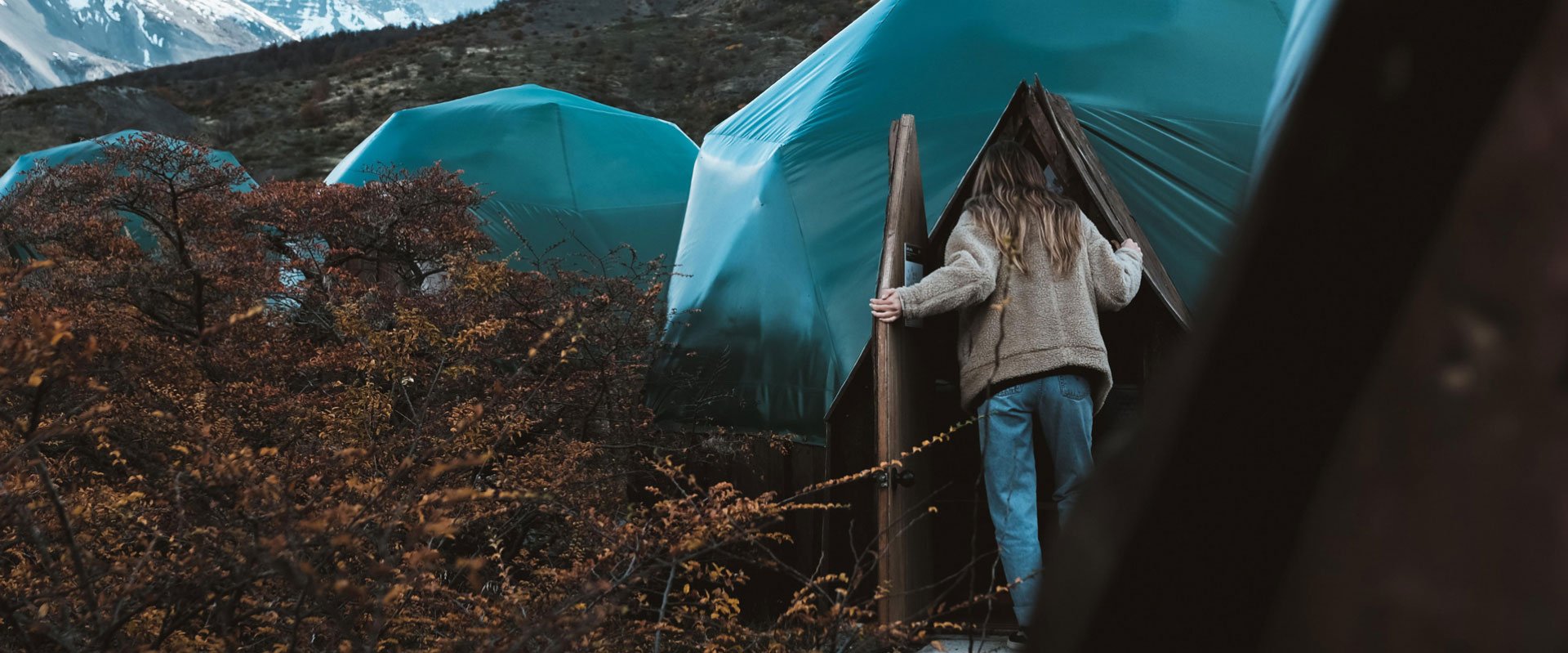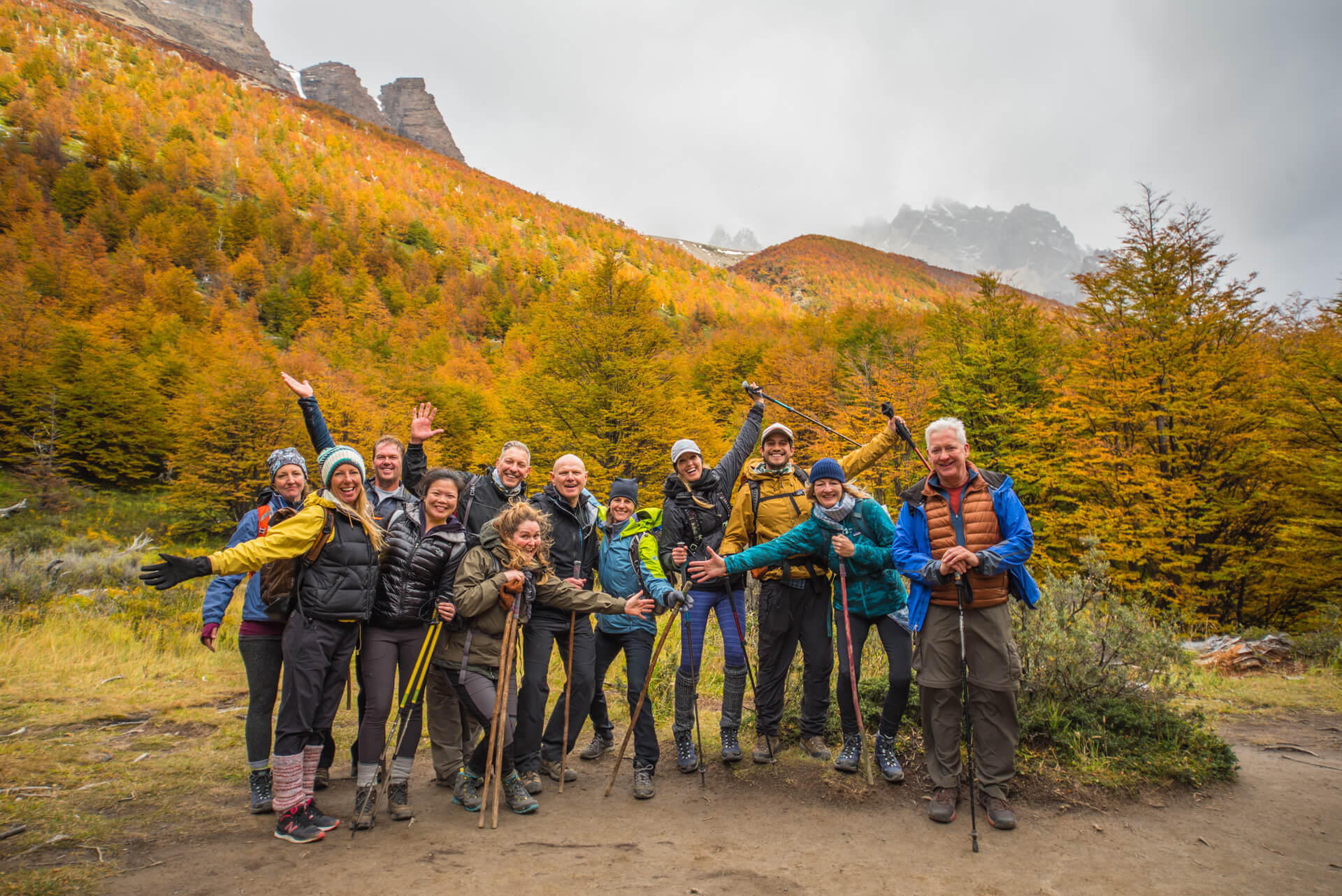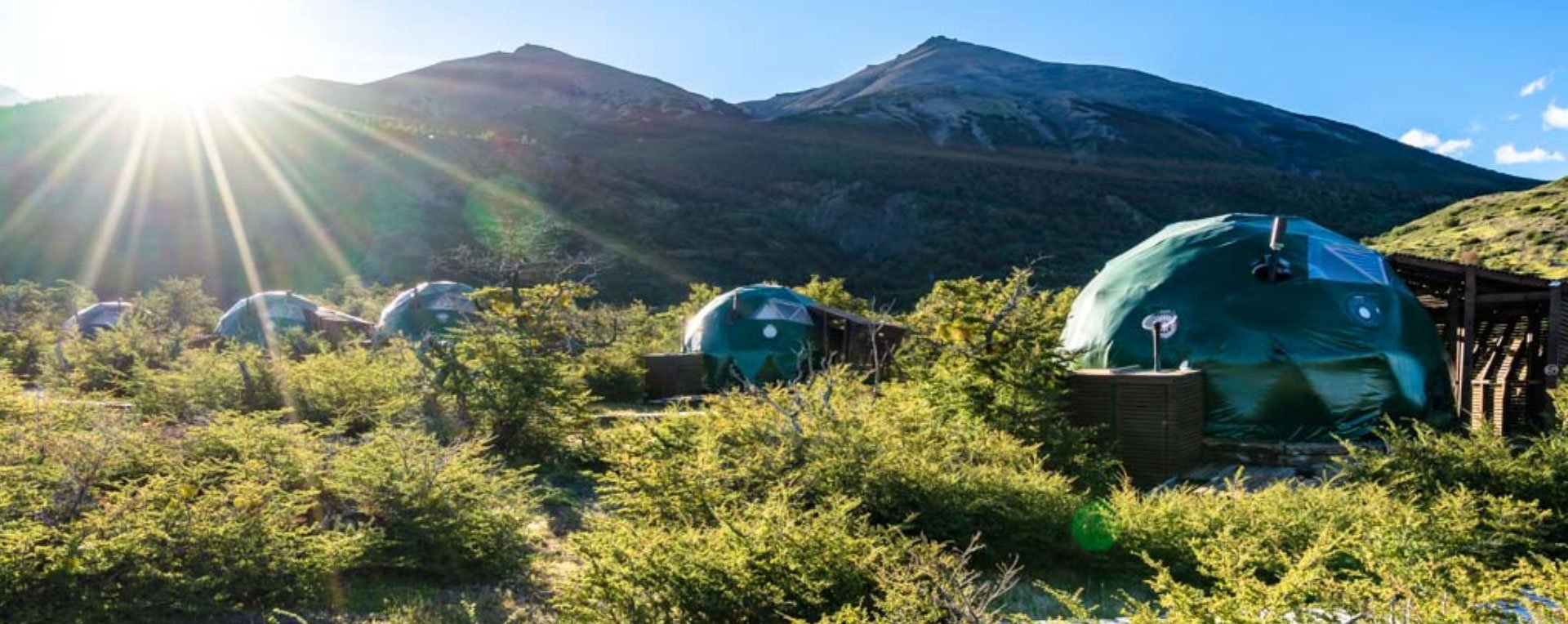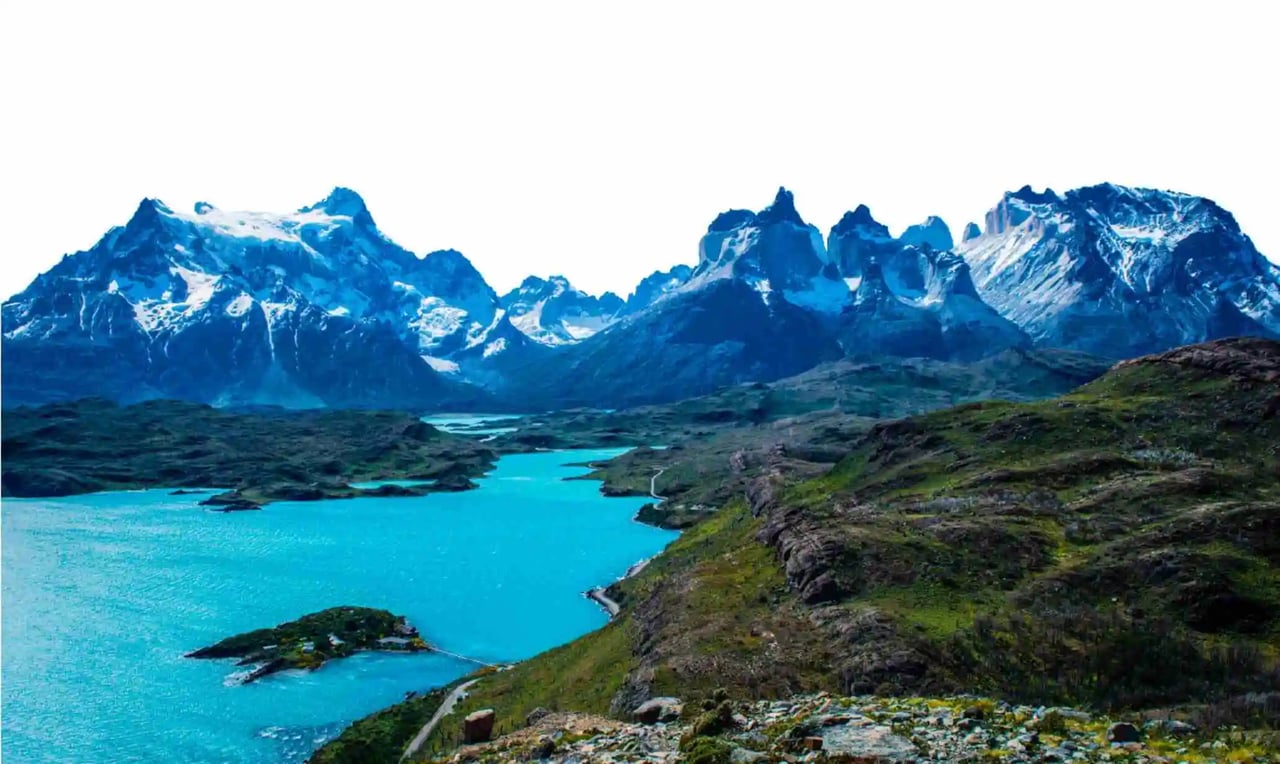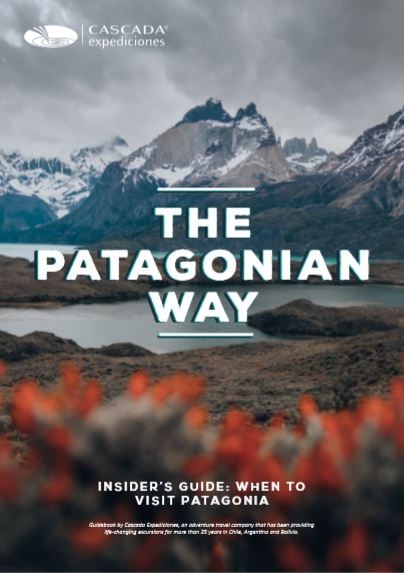The forecast says rain, sun, snow and wind --- what is it? The truth is, the weather in Torres del Paine and Patagonia is all of the above. It’s extreme, unpredictable and it changes rapidly. It’s not unheard of to experience all four seasons in a single day.
With that said, you really need to come prepared for anything!
Why is the Weather So Extreme?
To explain why the weather is so unpredictable, it is useful to know where Torres del Paine National Park is situated.
Torres del Paine is located in Patagonia, which encompasses the southern section of Chile and Argentina. The park is part of the Magallanes Region. Punta Arenas is about 300 km/187 miles away, Santiago 2200 km/1367 miles, and Buenos Aires 2400 km/1491 miles.
.webp?width=295&height=609&name=Mapa-Chile-y-Argentina-_blog-Siel_-_1_%20(1).webp)
Its official surface area is 227,298 hectares. Much of the landscape in the park is dominated by the mountain chain Paine Massif, which is part of the Andes and is known for its three iconic granite peaks.
The weather in Torres del Paine is impacted by the Andes Mountains, the winds from Antarctica, the ocean currents and the Southern Patagonian Ice Fields. Together, they create very unpredictable, quick-changing weather patterns.
Not to mention, there are many unique environments, such as valleys, rivers, glaciers, mountains, open plains, fjords and more. Each environment can have an impact on the weather as well.
.webp?width=1590&height=764&name=mapa-glaciares-y-lagos-_english_-BLOG%20(1).webp)
In Patagonia, the wind is known for its speed and intensity and can reach more than 100 miles per hour/160 kilometers per hour!
Some of this intensity is due to the fact that westerlies, strong winds blowing from the west, are passing through a wind zone known as the “Roaring Forties”. This wind zone sits at 40 to 50° latitude in the Southern Hemisphere and receives some of the strongest westerlies in the world. The westerlies are so strong because there aren’t many landmasses to slow their speed.
Torres del Paine is located in this zone and within close proximity to the open ocean. That makes the park incredibly vulnerable to these intense winds.
Can I Predict Anything?
In general, the weather is pretty difficult to predict on a day to day basis. However, there are a few trends that can give us an idea of the general climate at specific points of the year.
Spring
Months: Mid/Late-September, October and November.
Temperature: Low temperatures are in the 30-40’s°F (3-7°C) and high temperatures are in the 50-60’s°F (14-18°C).
Weather: It can be either warm or chilly during the day and nights are cold. Expect strong winds.
Likelihood of Rain: Strong possibility -- especially in September.
Daylight: There are roughly 12 to 17 hours of daylight per day, depending on the month.

Summer
Months: December, January, February and early March.
Temperature: Low temperatures are in the 40’s°F (6-8°C) and high temperatures are in the 60’s°F (17-20°C).
Weather: Warm days and cool nights. Summer also has the strongest wind.
Likelihood of Rain: Possibility of rain.
Daylight: 13 to 17 hours of daylight per day, depending on the month.
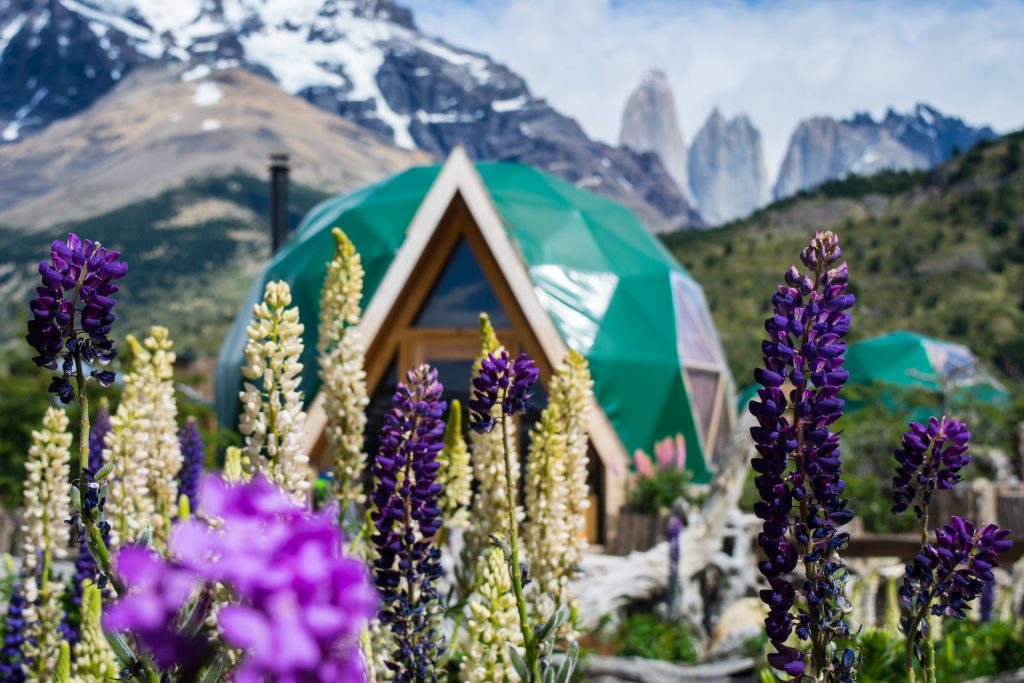
Autumn
Months: Late March, April and May.
Temperature: Low temperatures are in the 20-30’s°F (-3-3°C) and high temperatures are in the 40-50’s°F (5-13°C).
Weather: Cool days and cold nights. Possibility of rain and a possibility of snow later in the season.
Likelihood of Rain: Strong possibility of rain, especially later in the season.
Daylight: 8 to 11 hours of daylight per day, depending on the month.
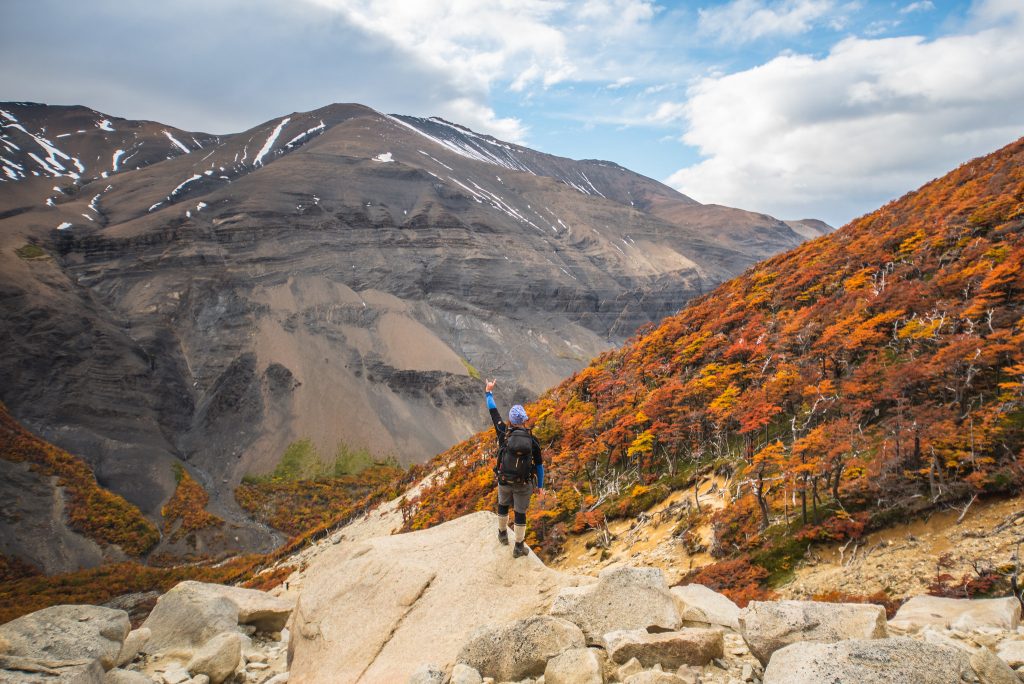
Winter
Months: June, July, August and early September.
Temperature: Low temperatures are in the 20-30’s°F (-3-0°C) and high temperatures are in the 40’s°F (around 5-8°C).
Weather: It is cold, and the winds are milder. There is a possibility of snowstorms and low visibility.
Likelihood of Rain: Snow, ice and rain are very likely .
Daylight: 8 to 12 hours of daylight per day, depending on the month.
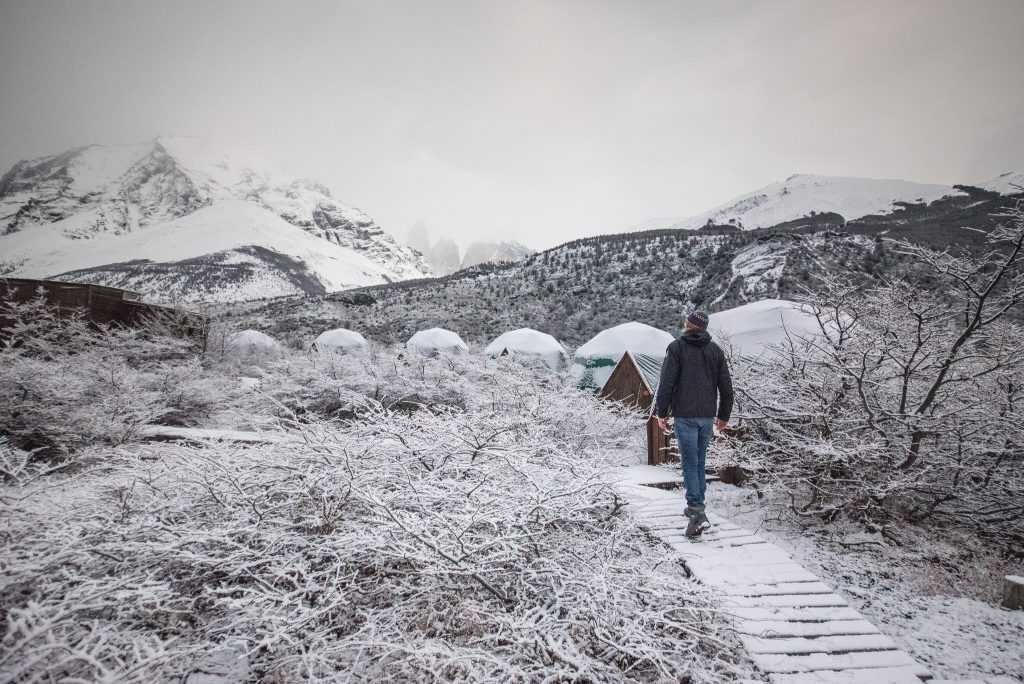
In this video, you will learn a little more about the weather in Torres del Paine.
How Do I Pack for Patagonia with Quick-Changing Weather?
One word: layers. Packing for Patagonia means lots and lots of layers. It is the only way you will be prepared for the region’s range of weather conditions and temperatures. Check out our video below to learn what you need to bring.
Do you want more information? Visit cascada.travel and learn about our programs.

